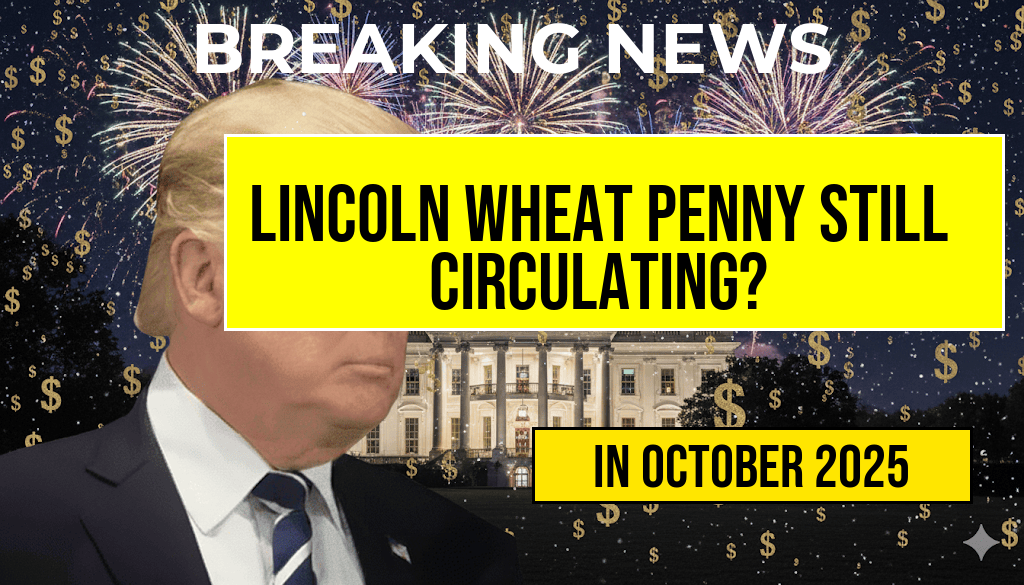The Lincoln Wheat Penny, a staple of American coinage from the early 20th century, continues to spark curiosity among collectors and casual enthusiasts alike. While most pennies circulate routinely with modest face value, certain rare variants can fetch astronomical sums at auction. One such example is a Lincoln Wheat Penny believed to be worth approximately $144,000, due to its rarity and historical significance. Despite this high valuation, reports suggest that such coins are still occasionally found in circulation, raising questions about their true rarity and the likelihood of encountering one today. This article examines the history of the Lincoln Wheat Penny, factors contributing to its value, and whether these coins remain accessible to everyday coin users or are confined to private collections and specialized auctions.
The Origins and Evolution of the Lincoln Wheat Penny
Historical Background
The Lincoln Wheat Penny was first introduced in 1909 to commemorate the 100th anniversary of Abraham Lincoln’s birth. Designed by Victor David Brenner, the coin replaced the Indian Head cent and quickly became a symbol of American currency. Its distinctive wheat ears on the reverse side persisted until 1958, marking nearly half a century of use. Initially, the penny was minted in bronze, and its design and production underwent minor adjustments over the years.
Transition and Rarity
By the late 1950s, the Lincoln Wheat Penny was phased out in favor of the Lincoln Memorial design, yet certain early versions, especially those from 1909 and 1914, became highly collectible. Variations like the 1909-S VDB, minted in San Francisco, are particularly coveted due to limited mintage and unique markings. The rarity of these early coins, combined with their historical significance, has driven their value well beyond their face amount, with some specimens commanding thousands or even hundreds of thousands of dollars at auction.
Factors Contributing to the Penny’s High Valuation
Key Attributes of Rare Lincoln Wheat Pennies
- Minting errors such as double strikes or off-center impressions
- Limited mintage from certain years or mint marks, notably 1909-S VDB
- Condition and grade with coins in mint or near-mint condition fetching higher prices
- Historical significance being the first year of issue or a key transition period
The $144,000 Valuation Explained
The figure cited—approximately $144,000—pertains to exceptionally well-preserved specimens of rare variants like the 1909-S VDB in pristine condition. Such coins often reside in private collections or museums rather than circulating among the general public. The high valuation reflects not only scarcity but also collector demand driven by historical importance and minting anomalies. Experts note that the market for rare coins fluctuates, influenced by factors such as economic conditions, collector interest, and grading standards.
Are Lincoln Wheat Pennies Still in Circulation?
Official Status and Usage
Despite their age, Lincoln Wheat Pennies remain legal tender and can technically be used for everyday transactions. However, the reality is that their practical circulation has diminished significantly. Modern coin handling practices, coupled with the coin’s age and often lower durability, mean most of these pennies are now found in collections, coin rolls, or as stored heirlooms rather than circulating in cash registers across the country.
Availability in Circulation
While rare, instances have been reported of wheat pennies turning up in change, especially from older batches of coins stored away by individuals or recovered from bank vaults. Nonetheless, the probability of finding a high-value specimen like the 1909-S VDB in daily transactions is exceedingly low. Most of these coins are now regarded as collectibles, with their value primarily realized through private sales, auctions, and coin shows.
How to Identify and Preserve Valuable Wheat Pennies
Tips for Collectors and Enthusiasts
- Check for key dates and mint marks, especially 1909-S VDB, 1914-D, and 1931-S
- Assess condition using professional grading standards; coins in uncirculated condition command the highest prices
- Look for minting errors such as double strikes, repunched mint marks, or die cracks
- Store coins properly in protective holders to prevent damage and preserve value
Resources for Authentication and Valuation
Professional grading services like PCGS and NGC provide authentication and grading, which significantly influence a coin’s market price. Additionally, reputable auction sites and numismatic catalogs offer insights into current market values and historical trends.
Market Trends and Collector Interest
Current Market Dynamics
The market for rare Lincoln Wheat Pennies remains active, driven by both seasoned collectors and new enthusiasts interested in American numismatic history. Auction prices for key specimens often reach into the six-figure range, reflecting their rarity and the strong collector demand. However, the average wheat penny in circulation remains a common find with no significant monetary value beyond face value.
Online Resources and Collecting Communities
Numerous online platforms, including numismatic forums and auction sites, facilitate the buying, selling, and discussion of rare pennies. Collectors are advised to research thoroughly and seek professional appraisals before making significant purchases or sales.
| Coin Variant | Estimated Value |
|---|---|
| 1909-S VDB (Beautiful condition) | $20,000 – $144,000 |
| 1914-D (Uncirculated) | $1,000 – $10,000 |
| 1922 Plain (High-grade) | $200 – $1,500 |
| 1931-S (Uncirculated) | $300 – $2,000 |
While the Lincoln Wheat Penny with a valuation of around $144,000 remains a prized rarity, most of these coins are no longer part of everyday circulation. Their scarcity and historical significance continue to make them highly sought-after items in the numismatic community, with their true value unlocked primarily through private sale or auction. For collectors, understanding the key features and grading standards is essential for identifying and preserving these tangible pieces of American history.
Frequently Asked Questions
Is the Lincoln Wheat Penny still in circulation today?
No, the Lincoln Wheat Penny is no longer in regular circulation. It was primarily produced between 1909 and 1958 and has since become a collectible item rather than a common coin used for everyday transactions.
Why is the Lincoln Wheat Penny valued at up to $144,000?
The high value of certain Lincoln Wheat Pennies is due to their rarity, unique minting errors, or specific historical significance. Coins with rare features or in exceptional condition can fetch prices up to $144,000 among collectors and numismatists.
How can I determine if my Lincoln Wheat Penny is valuable?
To assess the value of your Lincoln Wheat Penny, consider factors such as year and mint mark, condition, and rarity. Consulting with a professional coin appraiser or referencing reputable coin pricing guides can help you identify if your coin is worth a significant amount.
Are there any specific years or mint marks that are more valuable?
Yes, certain years and mint marks are more rare and highly sought after, such as the 1909-S VDB, 1914-D, and 1931-S. These coins often command higher prices due to their scarcity and historical importance.
Should I keep my Lincoln Wheat Penny or sell it?
If your Lincoln Wheat Penny is in excellent condition or is a rare variation, it may be worth selling to a collector. However, if it is common and in circulated condition, it might be better to keep it as a souvenir or investment for the future. Consulting a numismatics expert can help you decide.









